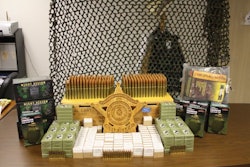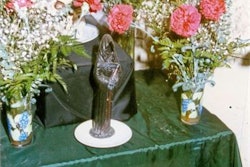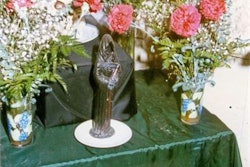As long as I can remember, criminal gangs have specialized in home invasion robberies.
Today, it is the Mexican Drug Trafficking Organizations (DTOs) and their hired guns who specialize in these home invasion robberies. To diminish the possible loss of too many resources, Mexican DTOs developed a policy of utilizing three separate houses to deal dope—one for the money, one for the drugs and one for the leadership. In this way, local gang jack teams, rival DTO teams, or the police might get one house, but very rarely all three.
These same cartel organizations often utilize ex-military or police personnel such as the Mexican Army Special Forces deserters called "Zeta" to form home invasion teams. These trained professionals are equipped with modern weapons and entry gear. They take the time to gather intelligence beforehand and attempt to identify all three drug house targets.
Also it is common for these teams to dress and identify themselves as police units when they try to make entry into the targeted homes. These same teams also commit kidnappings for the DTOs.
Only a small percentage of these drug-house home invasion robberies ever come to the attention of law enforcement. Unless things go bad and shots are fired with the resulting dead and wounded, most go unreported.
In the Blood and Crip crack epidemic of the 1980s, this phenomenon manifested itself in the explosion of "crack house jacks." Gangs developed special teams who located rival crack house drug locations and robbed them.
The criminal street gang's familiarity with this underground narcotics world and their own identification as a team or family—willing to kill or die for the gang—made them perfect perpetrators of home invasions and drug-house jacks.
Crack-house jacks became so common in Los Angeles that these drug spots began to fortify doors and windows and to employ lookouts and armed security teams of gang members in defense. Police SWAT and narco units believed this fortification and sudden increase in heavy armament was to prevent police raids. I believe the heavy metal upgrade was done more in defense against home invasions by rival gangs.
Not to be outdone by their African-American rivals, Latino gangs became more prolific in this criminal profession across the country. In Southern California, no one was more proficient at this than Hispanic gang members and their Mexican Mafia bosses.
The following are a few of the worst examples of these gang initiated home invasion robbery cases:
On Dec. 9, 1995, a Belgium native and Taiwanese import-export businessman, Koen Witters, was found strangled to death in his apartment bedroom in Roland Heights, a Los Angeles suburb. He was the latest victim of Johnny "Giant" Capistrano, 28, and Michael Eugene Drebert, 18,—two San Gabriel Valley gang members who were on a meth run and string of home invasion robberies in Whittier, West Covina, Baldwin Park and Rowland Heights. The victims were robbed; some were raped; and a few were murdered.
Still on their run two weeks later, they robbed an elderly couple returning home from a trip to the grocery store. They even robbed the couple of their Christmas gifts. Both victims survived the ordeal and the woman just happened to be a civilian volunteer for the West Covina Police Department. This was their first mistake.[PAGEBREAK]
Giant Capistrano and Mike Derbert made the even bigger mistake of talking about the robberies and murders in front of a young female babysitter hired to look after Capistrano's daughter. Both gang members would eventually be arrested and convicted for several of these home invasions. I was able to interview Giant while he awaited the death sentence in the San Quentin prison. He claimed to have had a religious conversion in prison and changed his ways, but that won't prevent his execution.
Long Beach gang members Gilbert Rubio, 37, Alex Vega, 43, and Monica Chavez, 41, were arrested and charged with a string of robberies beginning Nov. 3, 1997, and culminating Jan. 12, 1998 with the robbery murder of George Blackwell—the vice principal of Warren High School in Downey. Earlier, Rubio's girlfriend Monica Chavez got herself hired by Blackwell as a house keeper to clean his Long Beach home.
Chavez became the Trojan horse and allowed her home invasion accomplices into the Blackwell home. The trio forced Blackwell to write a $2,000 personal check before murdering the victim. Chavez and Vega were directed by Rubio to cash the check at a nearby bank. After Blackwell's murder, a neighbor witnessed Rubio leaving the residence.
The bank was suspicious and refused to cash the $2,000 check. Chavez and Vega returned to the Blackwell home to find it surrounded by Long Beach police cars. A couple of weeks later the trio was in custody and charged with the string of home invasion robberies and the Blackwell murder. All three would be convicted.
In the spring of 1997, Ruben "Diablo" Gomez of the East Side Wilmas gang was making a living robbing and killing drug dealers in Wilmington and San Pedro—the Harbor area of Los Angeles. Gomez certainly earned his moniker "Diablo," which means devil. Unfortunately for Diablo, some of these drug dealers were paying for the protection of the Mexican Mafia.
Arthur "Shady" Grajeda from the La Rana (The Frog) gang was a younger member of the notorious Grajeda Family who headed one powerful faction of the Mexican Mafia prison gang. The faction assigned Shady to enforce taxation of local drug dealers in the harbor area and specifically to a drug dealer called "Dunton" who had hired a 400-pound bodyguard to resist the taxation. Shady had the contract to murder Dunton.
Shady Grajeda needed someone familiar with Dunton, who could get him in the door and past the 400-pound bodyguard. Shady had also picked up the contract on the wayward Diablo, who had offended the Mexican Mafia by robbing their protected drug dealers.
Shady Grajeda learned that Diablo Gomez (the second target) was familiar with Dunton the dope dealer (the first target) and struck a deal with Diablo to cancel his "green light" if Diablo could get him inside to kill Dunton.
Diablo introduced Shady at Dunton's door as a potential drug buyer on July 1, 1997. Both Shady and Diablo were armed with sawed-off shotguns. Diablo had a cut-down pump and Shady Grajeda had a single shot sawed off. As they entered the home, Diablo shot the surprised bodyguard in the neck, but Grajeda hesitated after drawing his shotgun and pointing it at Dunton. Diablo would later say that he felt Grajeda could not carry out the hit, so Diablo pointed his weapon at Dunton and accused Dunton of being a police informant. To both of their surprise, Dunton said he was an informant for the feds.
Diablo shot Dunton in the head with his shotgun. The use of 12-gauge shotguns at point blank range had turned the room into a bloody mess. The noise, smoke, blood and brains filled the room, and the home invaders quickly fled the scene. Unknown to the killers, there was a witness to the murders hiding in the residence. By Nov. 7, 1997, both Shady and Diablo were in custody and charged with the murders.
I testified during the capital murder trial against the two home-invasion murderers. At the end of several hours of testimony, the prosecutor and Deputy District Attorney Anthony Manzella asked me why Grajeda had allowed Gomez to shoot both victims and failed to fire his own weapon. I answered that Diablo Gomez had a four-shot shotgun and Shady Grajeda had only one shot. Grajeda was saving his one shell to kill Gomez if he had the opportunity.
As I stepped down from the witness stand, Diablo Gomez called out to me and asked if he could tell me something. I said yes after seeing that both lawyers and the judge agreed. He told me, "You are right about what you said, but I'll never be that stupid again."
Both suspects were convicted and are currently on death row awaiting execution.
Related:
















